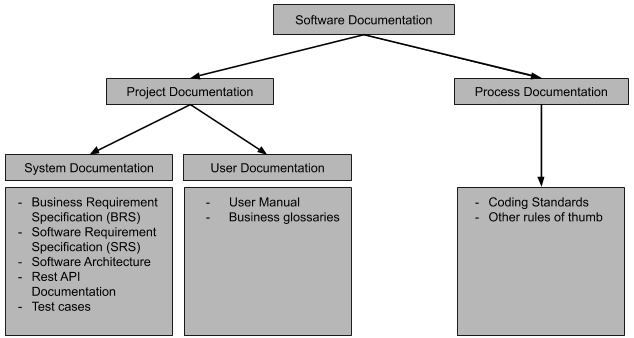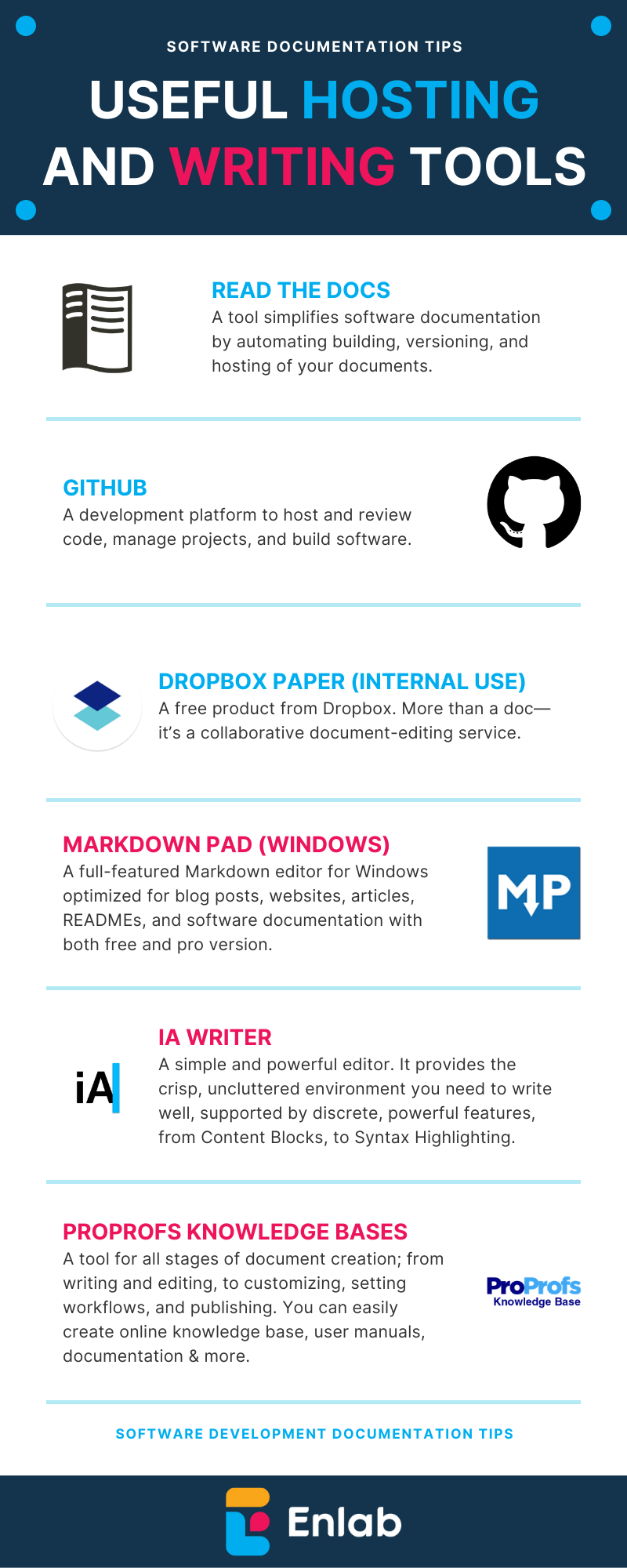“Working software over comprehensive documentation” is the manifesto of Agile methodology, however, the role of documentation in software development is still undeniable.
Without software documentation, the software seems to be a secret box to developers, end-users, and stakeholders. Due to the lack of transparency, this secret box may become useless as its inner workings are hidden from those who need them in the open.
Moreover, by conveying project/product information, software documentation can reflect your outsourcing experience and your professional outsourcing service as well. This is greatly helpful in making a good impression on your potential clients, building trust in your current clients, and strengthening partnerships with them.
How to make the software a glass box rather than a secret box? Software Documentation is born to answer this question. You’re not required to create all types of software documentation, but remember to create the most important ones.
The importance of software development documentation
To different people, software documentation shows different importance levels in separate aspects. However, reliable software documentation plays a critical part in both project/product completion and knowledge sharing, especially when the development team becomes unavailable.
To developers
Software development documentation can be considered as the compass for developers to define what needs to be done to complete the project/product and achieve the promised goals. With a clear understanding, developers can:
- Better keep track of all project aspects during the project/product lifecycle from its initiation to completion and even future maintenance if any.
- Significantly speed up the learning curves to quickly fulfill their missing knowledge and develop themselves in various aspects of the project/product.
- Faster adapt to the project/product progress even if they are a newcomer. This will be a big advantage to the whole team for not having to spend too much time and effort on training or exchanging all project/product information.
To stakeholders and products
With stakeholders, the development progress, the project/product quality commitment, and cost can be seen as their biggest concerns while working with an offshore development team. By producing effective software documentation, these problems can be partly solved. In other words, reliable software documentation can help stakeholders:
- Effectively keep track of the teamwork in progress during the project/product development based on provided plans, estimates, schedules, reports, etc.
- Easily review the implementation of key requirements, changes during the development being stated in the requirement specification, roadmaps, etc.
- Simplify the product and improve the quality of a software product based on testing results.
- Cut down future support costs in both technical aspects and customer support.
- Less depend on any specific offshore team for future project/product development. In bad situations, if an offshore team cannot meet the job requirements, another team can quickly get involved to rescue the project.
To end-users
Effective software documentation is not only helpful to users in using the product but also in choosing the most suitable one among lists of similar options. So, it means that good documentation might help increase your product competency as well.
Mostly, end-users care about how to make full use of a product that they’re interested in. In this case, effective and reliable software documentation will:
- Make the necessary information more transparent and accessible.
- Help end-users learn how to use the product quickly and effectively
Types of software development documentation
The purposes of using software documentation are various among developers, stakeholders, and end-users.
In general, they are divided into 2 main groups including Product Documentation and Process Documentation. Under these 2 groups, different documents exist such as Business Requirement Documents (BRS), Software Requirement Specification (SRS), Testing Documents, User Manual, etc.
However, a software company needs to define its own set of required documentation based on its real business demand so that it can effectively use and manage them. Here are examples of typical documents that a project/product may have:

How to write software development documentation?
To produce reliable documents, there are specific requirements in writing the software documentation that you need to pay attention to.
- Don’t worry about the number of documents, focus on the necessary ones.
- Ensure a balance between no documentation and excessive documentation to make sure that you create enough documentation for your workings. No need to waste your time and effort on creating unnecessary documents.
- Document the most necessary and relevant information. Make sure the document accurately reflects important information.
- Analyze the project’s aspects, especially the complexity. By doing this, you’ll get an overview of what needs to be clarified on the documentation to ensure information transparency between parties.
- Build an ongoing process for your software documentation.
- Keep your documentation up-to-date throughout the project/product development so that all parties can have access to the latest information.
- Systematically update all changes to the documentation to prevent misunderstandings or lack of information.
- Encourage collaborative effort of all team members.
- Interview team members (programmers, testers, etc.) about the functionalities of the software to have a deeper understanding of the project/product they’re working on, especially when you are documenting something like a user manual.
- Share written documents with your team, and get feedback to improve your writing, correct your misunderstandings, and ensure documentation accuracy in all aspects of the project/product.
- Try to comment, ask questions, and encourage others to share their thoughts and ideas. This is also a good way to evaluate the objectivity of your documentation.
- Don’t ignore glossaries. Not all people can correctly understand the meaning of technical terms in software documentation. The glossary is a useful brief dictionary for readers to understand what you are trying to convey in the document.
- Try your best to clearly explain every term and its specific meaning. Any misunderstanding can cause bad effects in both project/product development and user experience.
- Communicate ideas and key points in clear language to set lingua franca between stakeholders, internal members, and users. It’s important to ensure both technical and non-technical readers understand what you’re talking about.
Useful tools in software documentation management
Understanding the needs of software documentation management, many tools are developed to help software teams effectively write and store their important documents in one place.
These tools help create documents in proper formats to use in software development and ensure the accessibility of related parties to the sources of project documentation for various uses.
In this article, we’d like to share with you some hosting and writing tools. Please take a look at the picture for more details.
Hosting options:
- Read the docs
- GitHub
- Dropbox paper (for internal use)
Writing tools
- MarkdownPad (Windows)
- iA Writer (Simple and Powerful editor for Mac)
- ProProfs Knowledge Base

Final thoughts
Well-written software documentation must contain specific, concise, and relevant information. By producing an effective software document, you’ll help create high-quality software with a reduced risk of software development.
Despite the importance of software documentation, it’s unnecessary to write all types of documents. A better approach to documenting is to define your project/product objectives and focus only on the documents that directly help you achieve them.
References
- Benjamin Brandall, 18 Software Documentation Tools that Do The Hard Work For You, www.process.st, 2020.
- The Best Online Software Documentation Tools of 2020, blog.bit.ai, 2020.
- Technical Documentation in Software Development: Types, Best Practices, and Tools, www.altexsoft.com, 2019.
- Software Documentation Types and Best Practices, blog.prototypr.io, 2018.
- Alex Trica, The Importance of Documentation in Software Development, filtered.com.





